Bandages and Tapes: Enhancing Agricultural Practices
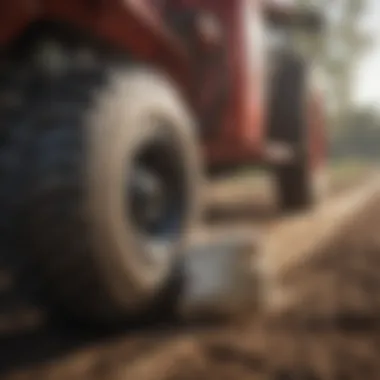
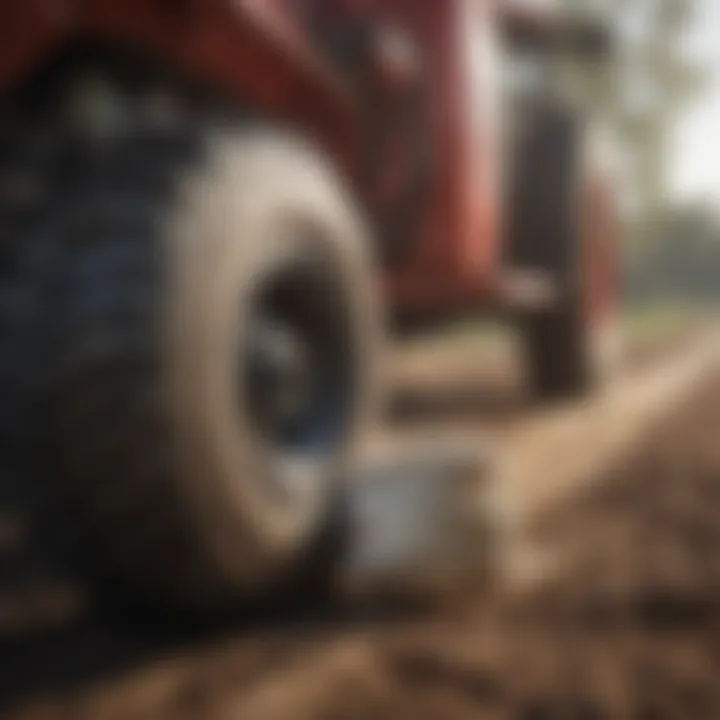
Intro
In the ever-evolving world of agriculture, the integration of various materials has become essential for optimizing practices. Among these materials, bandages and tape play a surprisingly crucial role. Their applications range from equipment maintenance to post-harvest management, impacting both productivity and sustainability. Understanding how and why these simple tools are utilized in the agricultural sector can lead to improved practices and outcomes for farmers and horticulturists.
Overview of the Topic
Definition and Importance
Bandages and tape in agriculture refer to flexible materials used for repair, support, and enhancement of tools or crops. They can be made from a range of materials, including cotton, plastic, and adhesive compounds. These materials serve various purposes such as protecting plant wounds, securing equipment, or facilitating more efficient harvest processes. The importance lies in their capacity to minimize loss, enhance performance, and contribute to sustainable farming practices.
Current Trends
Trends in agriculture indicate an increased reliance on non-traditional materials to improve efficiency. Many farmers are now recognizing the benefits of using specific types of tape for different applications, such as waterproof tapes for irrigation management or breathable tape for protecting plant wounds. Innovations in bio-degradable tapes are also gaining popularity, aligning with the sustainability goals of modern agriculture.
Key Techniques and Practices
Step-by-Step Guide
To effectively use bandages and tape in agricultural practices, one may follow these steps:
- Assessment: Identify the need for bandaging or taping—whether it involves equipment or crops.
- Selection: Choose the appropriate type of bandage or tape based on material and intended use.
- Application: Properly apply the tape or bandage to ensure effectiveness. For example, wrap a breathable bandage around a plant injury to protect it while allowing air circulation.
- Monitoring: Keep an eye on the condition of the bandaged or taped area. Regular checks help in ensuring that the treatment remains effective.
- Adaptation: Based on observations, make necessary adjustments, such as reapplying or changing the type of bandage/tape used.
Tools and Equipment Needed
While the main tools are the bandages and tape themselves, additional tools can enhance their effectiveness:
- Scissors: For cutting tape to the desired size.
- Measuring tape: For ensuring proper application lengths.
- Gloves: To maintain hygiene, especially when attending to plant wounds.
Challenges and Solutions
Common Obstacles
Despite their benefits, the use of bandages and tapes in agriculture can face various challenges. For instance, materials may not always adhere properly in wet conditions, or crop wounds may become infected despite bandaging.
Innovative Solutions
Addressing these challenges involves several innovative strategies:
- Selecting high-quality materials that offer better adhesion in diverse conditions.
- Using coatings or sprays to enhance the durability and weather-resistance of tapes.
- Employing regular training for farmers on best practices to ensure effective application and management.
"The integration of bandage and tape technologies in agricultural practices can lead to significant boosts in crop resilience and overall efficiency."
Understanding the multifaceted roles of these everyday materials in agriculture opens new avenues for improving farming techniques and enhancing productivity. By carefully selecting and applying bandages and tapes, farmers can navigate the challenges of modern agriculture effectively.
Prolusion to Bandages and Tapes in Agriculture
Understanding the role of bandages and tapes in agriculture is crucial for modern farming practices. These materials are not merely supplementary; they play a pivotal role in enhancing efficiency and sustainability in various agricultural activities. Farmers increasingly recognize that small details, such as the choice of fastening, can have a significant impact on productivity and crop health.
The use of bandages and tapes extends beyond simple wrapping of injuries or securing tools. They showcase versatility, serving multiple functions across different stages of farming, from planting to harvest and beyond. Using these materials effectively can lead to benefits like increased durability of equipment, improved plant health, and better organization of farming practices.
Considerations regarding the right type of bandage or tape are essential. Different applications require specific characteristics. For example, certain materials might excel in moisture retention, while others may provide superior protection against pests. This illustrates the need for farmers to understand not just the uses of these materials but also their properties to make informed decisions during implementation.
Further investigation into the historical context of these materials reveals how traditional practices have evolved. Learning from history allows current and future farmers to avoid past mistakes while embracing innovations tailored to meet modern challenges.
Bandages and tapes are integral in securing not just crops but also the future of sustainable agriculture.
The following sections will dissect the definition and overview of bandages and tapes, followed by a look into their historical context, ensuring a well-rounded understanding of their importance in agriculture.
Types of Bandages Used in Agriculture
In the realm of agriculture, the application of bandages extends far beyond mere first aid for plants or equipment. Understanding the various types of bandages is essential for any farmer or agricultural professional aiming to enhance crop health and equipment durability. Different bandages serve distinct purposes, catering to specific needs within the agricultural process. They are not only practical but also vital for preventing losses due to injuries or damages.
Traditional Cloth Bandages
Traditional cloth bandages have a long-standing presence in agricultural practices. Made from materials like cotton or linen, these bandages offer a breathable solution for wrapping around plants that require protection. Their porous nature allows for air circulation, which is critical for healing. Farmers appreciate these bandages for their versatility; they can be cut to size and applied in various ways, depending on the situation.
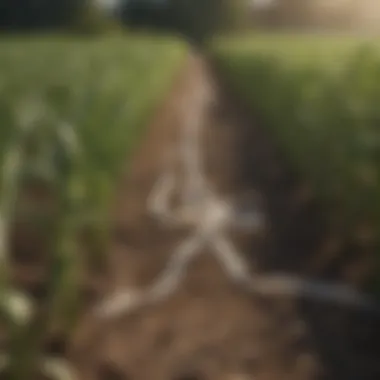
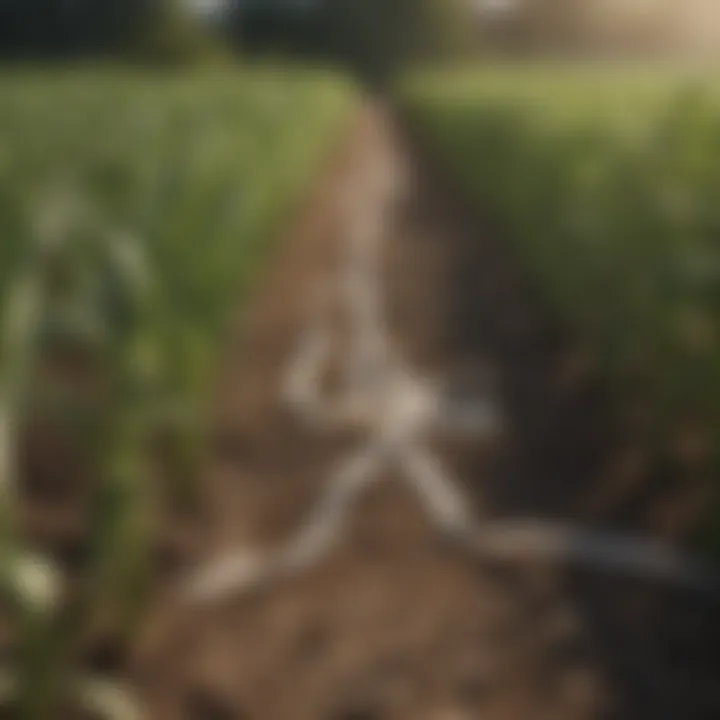
One key benefit of using cloth bandages is their reusability, which contributes to cost savings in the long run. Furthermore, these bandages are biodegradable, making them an environmentally friendly option compared to synthetic alternatives. However, care must be taken to ensure they are clean before application, as contaminants can hinder plant recovery or lead to further issues.
Adhesive Bandages
Adhesive bandages have become increasingly popular among farmers due to their ease of use and immediate application. These bandages typically come with a sticky backing that allows them to adhere directly to the surface of the injury. This type of bandage is particularly efficient for small cuts or wounds in plants, protecting them from pathogens and external elements.
The convenience of adhesive bandages means they can be applied quickly, saving time during critical farming tasks. Moreover, they often feature materials that are resistant to moist environments, enhancing their durability. While beneficial, farmers must be cautious when using these bandages. Over-application or incorrect placement can cause more harm than good, potentially suffocating the plant or trapping moisture beneath the bandage.
Specialty Bandages for Plants
Specialty bandages have emerged as targeted solutions for specific agricultural needs. These can include hydrogel bandages designed for plants suffering from dehydration or specialized wraps that are infused with nutrients to promote healing. Each type of specialty bandage is tailored for distinct issues, providing a solution that standard bandages may not resolve effectively.
The use of specialty bandages can drastically improve plant recovery rates. For instance, bandages that retain moisture help mitigate the impact of drought conditions, enabling plants to thrive even under stressful circumstances. In addition, some of these bandages are designed to deter pests, providing a dual function of healing and protection.
Farmers should evaluate their specific needs before selecting a specialty bandage. While these products may be more expensive than traditional options, their effectiveness in certain situations justifies the investment.
Understanding the variety and application of bandages is crucial for achieving sustainable agricultural practices. A well-informed approach to using bandages leads to better crop health, which ultimately contributes to more efficient farming.
Thus, the choice of bandages can greatly affect the outcome of agricultural practices. Whether opting for traditional cloth, adhesive, or specialty bandages, each type plays a significant role in safeguarding both crops and equipment.
Types of Tapes in Agricultural Applications
In agricultural practices, the use of various types of tapes is crucial for enhancing efficiency and ensuring proper management of crops and equipment. Tapes serve multiple functions, such as securing tools, maintaining crop health, and protecting machinery. Each category of tape offers distinct advantages tailored to specific applications, contributing to better overall agricultural productivity.
General Adhesive Tapes
General adhesive tapes are versatile and commonly used in agriculture. These tapes come in various widths and lengths, making them suitable for a wide range of tasks. They are helpful for securing equipment and tools, binding hoses, and providing temporary fixes in the field. The adhesive used is typically strong enough to endure agricultural environments, which may include extreme weather and exposure to UV light.
One notable characteristic is their ease of use. Farmers can quickly apply the tape without needing specialized skills or tools. This rapid application can save time during intense fieldwork phases. However, it is essential to choose a tape with adequate strength to resist tearing, especially in high-stress applications. The cost-effectiveness of general adhesive tapes also makes them a preferred choice in many farming practices.
Weather-Resistant Tapes
Weather-resistant tapes play a vital role in agriculture, particularly for outdoor applications. These tapes are designed to withstand harsh environmental conditions such as rain, wind, and extreme temperatures. Made with specialized adhesives, they maintain bonding strength even in fluctuating climates.
Farmers often use weather-resistant tapes for wrapping plant supports, securing greenhouse structures, and reinforcing joints in irrigation systems. The resilience of these tapes helps to ensure that they do not degrade quickly, thereby reducing the frequency of replacements and maintenance. As a result, they contribute to more sustainable farming practices.
Moreover, weather-resistant tapes are available in various colors and sizes, allowing for effective visual identification in the field. This feature can be particularly useful when marking specific plants or sections of crops that require special attention or treatment.
Biodegradable Tapes
Biodegradable tapes are an innovative solution in modern agriculture, aligning with sustainable practices. These tapes are made from natural materials that break down over time without leaving harmful residues in the soil. Their environmental friendliness is their primary selling point, appealing to farmers focused on sustainable methods.
These tapes are often used in scenarios where temporary binding is required, such as connecting plant supports or holding together seedlings. After their purpose is served, they decompose naturally, enriching the surrounding soil instead of contributing to waste. However, the durability might not match that of synthetic options, so it is crucial for farmers to assess the longevity required for their specific applications.
In summary, the variety of tapes available for agricultural applications provides solutions tailored to the needs of farmers. From general tapes that provide everyday convenience to weather-resistant options that stand up to nature’s challenges and biodegradable tapes that prioritize environmental health, each type serves an essential role in enhancing agricultural practices.
Applications of Bandages in Agriculture
The applications of bandages in agriculture serve multiple essential functions. They are not merely for the sake of protection, but they also actively contribute to efficiency and sustainability in farming practices. Understanding the specific uses of bandages can guide farmers in improving their operational processes. Each application presents unique advantages, from managing post-harvest conditions to enhancing crop resilience. The significance of bandages cannot be overstated, as they offer solutions that are practical, cost-effective, and adaptable to various farming scenarios.
Post-Harvest Management
Post-harvest management is critical for maintaining the quality of crops. Bandages are employed to protect fruits and vegetables during storage and transport. This minimizes physical damage that could occur and helps maintain their market value. Bandages can prevent bruising and keep produce from coming into contact with rough surfaces. Additionally, applying special bandages can help in regulating humidity and temperature. This is particularly useful for sensitive crops, which can spoil quickly if not managed well.
Key Benefits in Post-Harvest Management:
- Reduction of Spoilage: Using bandages can significantly reduce spoilage rates by providing cushioning and insulation.
- Market Readiness: Produce that is well-protected tends to have higher quality, which is essential for market sales.
- Custom Solutions: Different types of bandages can be selected based on the specific needs of various crops, leading to tailored management strategies.
Crop Resilience Enhancements
Crop resilience is another area where bandages contribute positively. They can protect young plants from adverse weather and pests. For instance, when young seedlings are exposed to harsh elements like strong winds or frost, bandages can wrap around them, providing much-needed support. This temporary protection allows plants to establish themselves better without undue stress.
Implementing Enhancements:
- Weather Protection: Bandages can minimize the impact of frost or wind on seedlings.
- Pest Shielding: Certain bandages can discourage pests from accessing the plants, reducing the need for chemical treatments.
- Healthier Growth: With protective measures in place, plants can focus on growth rather than recovery from damage, leading to stronger yields.
Equipment Protection
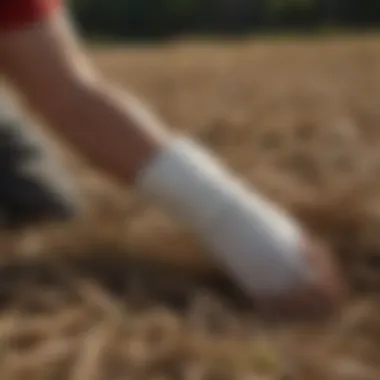
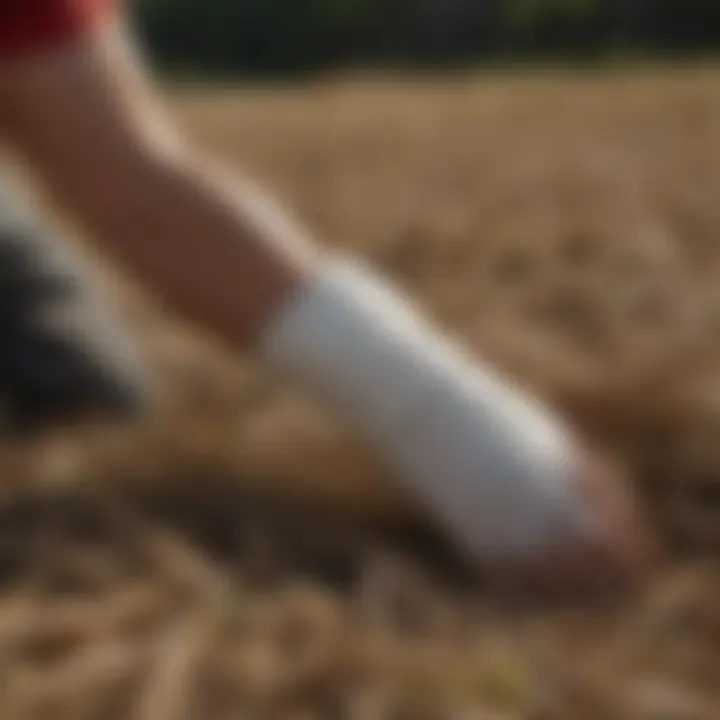
In a farming setting, equipment is subject to wear and tear. Bandages play a key role in prolonging the life of essential tools and machinery. For example, applying specialized bandages on equipment can safeguard it from moisture, dirt, and corrosion. This not only enhances the lifespan of equipment but also maintains efficiency, reducing downtime for repairs.
Benefits for Equipment Protection:
- Increased Longevity: Bandages prevent damage from environmental factors, keeping equipment functional for longer periods.
- Cost Savings: Investing in bandages for equipment can save money in the long run by lowering repair costs and extending the life of tools.
- Operational Efficiency: Well-maintained equipment functions better, leading to improved productivity in agricultural operations.
Overall, the applications of bandages in agriculture are fundamental for improving various aspects of farming practices. The integration of such simple tools can vastly enhance quality, resilience, and protection across the board. It's a powerful example of how small items can lead to greater benefits in the agricultural sector.
Functions of Tapes in Farming
Tapes serve multiple functions in agricultural practices, making them invaluable in maintaining efficiency and improving outcomes. Understanding their various roles is essential for farmers aiming to optimize both crop production and equipment usage. The effective application of agricultural tapes can simplify daily tasks and contribute to overall productivity in farming.
Securing Equipment and Tools
One of the primary functions of tapes in farming is securing equipment and tools. When working in the field, having tools properly fastened can prevent accidents or losses that could slow down operations. Duct tape and electrical tape, for example, offer excellent adhesion, making them suitable for binding cables or fixing equipment parts temporarily. By using these tapes, farmers can ensure that everything stays in place while they work.
Additionally, securing items can also help in transporting tools. Taping toolboxes, garden hoses, or extension cords can avoid tangling and damage. This not only saves time but also extends the lifespan of the equipment. Clear labeling of taped items can further enhance organization on the farm.
Field Identification and Labeling
Tapes are also crucial in field identification and labeling. Marking different crops, plots, or sections of land is important for effective management. Colored tapes can be used to differentiate between various types of crops or growth stages. This helps farmers quickly identify areas requiring specific attention, whether for watering or pest control.
Moreover, tapes can carry information, such as planting dates or pesticide treatments. This practice improves record-keeping and facilitates better planning for future harvests. Using weather-resistant tape ensures that labels remain intact under various conditions, thereby maintaining information accuracy throughout the growing season.
Water and Pest Control
Another significant function of tapes in agriculture involves water and pest control. Farmers use tape to secure drip irrigation systems, ensuring that water reaches plants efficiently without leakage. Furthermore, specialized tapes can be employed to trap pests or prevent them from accessing crops. For instance, some tapes contain adhesive surfaces that capture insect pests, reducing the need for chemical interventions.
In addition, some tapes can be treated with organic repellents to deter pests while being safe for the environment. Using such tapes can lead to healthier crops and contribute to more sustainable farming practices.
"The integration of tape solutions can significantly enhance resource management and sustainability in agriculture."
In summary, the proper use of tapes in farming promotes operational efficiency, helps in organization, and contributes to sustainable practices. By securing tools, facilitating field identification, and aiding in pest management, tapes prove to be essential resources for modern agricultural operations.
Benefits of Using Bandages and Tapes
Bandages and tapes play a vital role in agriculture, not only providing essential functions but also delivering significant benefits that can enhance farming practices overall. Understanding these advantages is crucial for farmers and agricultural practitioners who seek efficiency and sustainability in their operations. The use of these materials can contribute to cost savings, versatility across different tasks, and ease of application.
Cost-Effectiveness
The cost-effectiveness of bandages and tapes in agriculture is one of the primary reasons why they are widely adopted. Farmers are constantly seeking ways to reduce expenses, especially in resource-intensive practices. Bandages and tapes can be economically viable solutions for various problems. For example, using cloth bandages or adhesive options can help in quickly repairing equipment or managing crop injuries without the need for expensive, specialized solutions. This makes them a smart choice in managing budgets effectively.
Additionally, the longevity of certain tapes, particularly weather-resistant and biodegradable options, can contribute to reduced need for frequent replacements. Considering the minor investment in these materials can provide a substantial return, farmers can maximize their operational budgets more effectively.
"Cost savings in agriculture can come from simple solutions, like using bandages and tapes for various tasks."
Versatility in Uses
One of the most compelling aspects of bandages and tapes is their versatility. This flexibility allows farmers to adapt the use of these materials to a wide range of needs within their operations. From securing plant stakes to repairing equipment, the applications are numerous.
- Post-harvest management: Bandages can wrap fruits and vegetables to protect them during transport.
- Crop resilience: Specialty bandages can aid in healing plant wounds, helping to sustain health and yield.
- Tapes for equipment: General adhesive tapes can secure tools and machinery effectively.
In essence, bandages and tapes can minimize waste and streamline processes across many agricultural practices, catering to both minor repairs and more significant agricultural challenges. The fact that a single type of tape can serve different functions also enhances their appeal to farmers seeking inclusive solutions.
Ease of Use
The ease of use associated with bandages and tapes makes them indispensable tools in agriculture. Farmers often work in challenging conditions where time and efficiency are of the essence. Bandages and tapes generally require minimal training to apply correctly. This means that even new workers can quickly learn to use them effectively without extensive instruction.
Moreover, many products come pre-cut or in user-friendly formats, enabling rapid application. Some tapes, such as biodegradable options, can be handled without additional tools, reducing preparation time significantly. In critical situations, such as repairing an injured plant or securing a tool in the field, quick and effective application can make a remarkable difference in operational workflow.
Best Practices for Application
In agriculture, the effective use of bandages and tapes can significantly contribute to operational efficiency and crop sustainability. Best practices in this context form the backbone of successful applications. These strategies help ensure that bandages and tapes achieve their intended purposes while minimizing waste and maximizing benefits.
Proper Handling Techniques
When dealing with bandages and tapes, proper handling is crucial. If mishandled, the materials can become ineffective or even harmful. Here are some key points to consider:
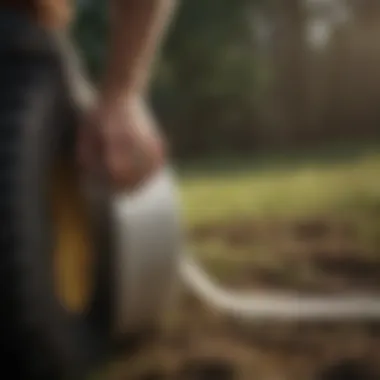
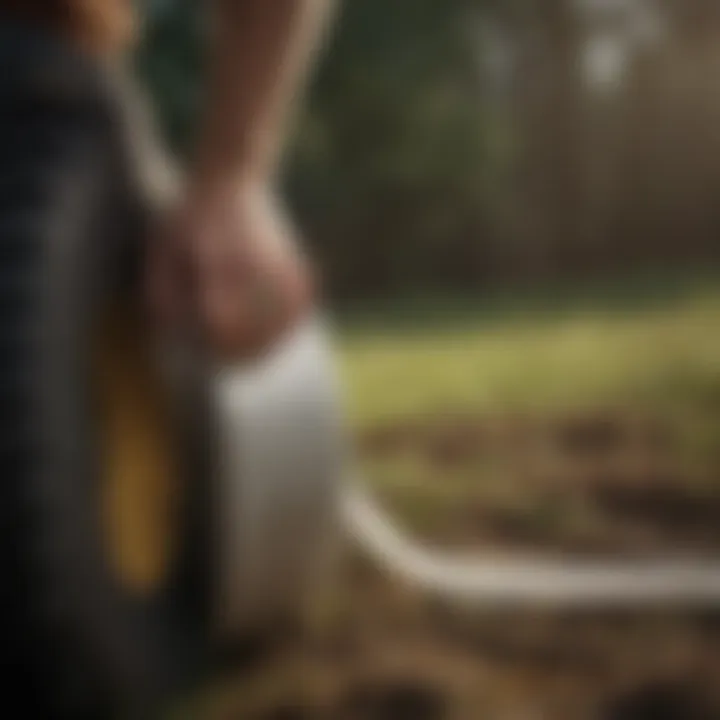
- Always start with clean hands and surfaces to avoid contamination. Dirt or moisture can reduce adhesion and effectiveness.
- Use appropriate tools for cutting and applying the bandages and tapes. For example, scissors or specific dispensers help ensure clean edges and reduce tearing.
- Apply tension evenly when wrapping materials around plants or tools. Too tight can restrict growth and damage, while too loose may not provide adequate support.
These techniques not only enhance the durability of the application but also extend the lifespan of the bandages and tapes used in the process.
Storage Recommendations
The way bandages and tapes are stored can significantly impact their performance. Proper storage practices can preserve the integrity and usability of these materials, which is crucial in agricultural settings where timing is often critical. Consider the following recommendations:
- Store bandages and tapes in a cool, dry place. Prolonged exposure to moisture or extreme temperatures can weaken adhesive properties.
- Keep products in their original packaging until needed. This protects them from dust and other environmental factors.
- Organize materials by type and use, ensuring easy access when required. This not only saves time but reduces waste due to misplacement.
By following proper handling techniques and storage recommendations, agricultural practices can utilize bandages and tapes more effectively, leading to improved results in crop management and equipment protection.
Challenges and Limitations
Understanding the challenges and limitations of bandages and tapes in agricultural contexts is crucial. Despite the benefits these materials bring, they are not without their issues. Recognizing these challenges allows farmers and professionals to make informed decisions regarding their use. This section will explore two significant areas of concern: durability and environmental impact.
Durability Concerns
Durability is a primary concern when it comes to bandages and tapes used in agriculture. These materials must withstand various environmental conditions, including moisture, heat, and UV radiation. Often, the effectiveness of a bandage or tape diminishes over time due to exposure to these elements.
Farmers need to pragmatically assess the durability of product they choose. A bandage designed for plant use might offer great flexibility but may not perform as well in wet conditions. Similarly, specialized tapes that excel in high temperatures may not be suitable for cooler climates. Furthermore, improper application can also lead to premature failure of these products.
Investing in high-quality bandages and tapes can mitigate some of these durability issues. Testing products in particular environments before widespread application can be beneficial.
Environmental Impact
The environmental impact of bandages and tapes is another important consideration. Many traditional products are made from non-biodegradable materials. This raises concerns about long-term waste management, particularly in areas where plastic pollution is already a significant issue.
Some farmers opt for biodegradable alternatives. However, even these may have limitations. The rate of decomposition can vary widely depending on local conditions, including soil type and moisture levels. Therefore, while biodegradable options seem like a more environmentally friendly choice, they may not always break down effectively in all settings.
Furthermore, the production of adhesives and materials used in these products may also contribute to environmental degradation. Understanding the life cycle of these materials helps in making more sustainable choices.
"It’s essential for farmers to balance effectiveness and environmental responsibility when choosing bandages and tapes for their practices."
In summary, while bandages and tapes offer various benefits in agricultural practices, their challenges regarding durability and environmental impacts should not be overlooked. Addressing these issues requires careful selection and application of the products in alignment with local environmental considerations.
Innovative Alternatives
The exploration of innovative alternatives in the context of agricultural bandages and tapes is crucial for advancing modern farming. These alternatives not only enhance traditional practices but also align with sustainability goals. As farmers seek new ways to improve efficiency and adapt to changing environmental conditions, innovative materials and technologies become essential tools to support varied agricultural needs.
Emerging Materials
In recent years, a variety of emerging materials have gained traction in the agriculture sector. These materials often focus on sustainability and performance, thus offering significant benefits over conventional options. Among them, materials made from organic fibers, recycled plastics, and bio-based compounds are standouts.
- Organic Fibers: These fibers are derived from plants and can be used to create eco-friendly bandages. They offer good breathability and biodegradability, making them ideal for short-term applications in the field.
- Recycled Plastics: Utilizing plastic waste for manufacturing tapes and bandages helps reduce pollution. Recycled materials possess properties similar to traditional plastics but come with a lower environmental footprint.
- Bio-Based Compounds: Innovations in chemistry have produced materials that are not only efficient but also accelerate decomposition. These compounds minimize negative impacts on soil and local ecosystems.
Farmers who invest in these emerging materials not only contribute to environmental conservation but often benefit from enhanced product performance. They can provide better support for crops, protect valuable equipment, and reduce waste significantly.
Technological Advances
Technological advancements are playing a pivotal role in refining how bandages and tapes are utilized in agriculture. Innovations are focused both on the materials used and on the application methods.
- Smart Adhesives: These adhesives can sense environmental changes, such as humidity and temperature, and adjust their properties accordingly. This feature leads to improved adhesion in varying conditions, which is valuable for all types of agricultural applications.
- Application Devices: Precision application tools have emerged that allow for better precision when applying tape or bandages. This results in less material waste and better outcomes for plant health.
- 3D Printing: The use of 3D printing technology is evolving rapidly, making it possible to create customized bandages that fit the specific needs of a plant or tool. Tailored solutions can lead to improved efficacy and sustainability.
Adopting these technological advances can offer farmers substantial improvements in efficiency and effectiveness. Embracing these new options ensures that agricultural practices meet contemporary challenges, from pest control to equipment maintenance.
By integrating innovative alternatives, farmers can enhance not only productivity but also environmental stewardship.
These developments signal a shift in how bandages and tapes are perceived not merely as tools, but as integral components of sustainable agricultural systems. As the landscape of farming evolves, so too does the utility and importance of these materials.
Finale
The discussion on the role of bandages and tapes in agricultural practices underscores their critical significance to modern farming methods. As outlined throughout the article, these tools serve multifunctional purposes, including not only injury management of plants and equipment but also facilitating better post-harvest processes.
One important element highlighted is the cost-effectiveness of bandages and tapes. Many agricultural professionals find that these materials can prevent larger expenses associated with crop loss or equipment damage. Instead of investing in expensive repairs or replacements, farmers can apply a bandage or tape, which often provides a temporary yet effective solution.
Furthermore, versatility remains a key consideration. Bandages and tapes come in various forms, each catering to specific needs, from traditional cloth bandages to modern biodegradable options. This adaptability means that almost every farmer can find suitable products that align with their operational requirements.
In addition to these benefits, ease of use cannot be overlooked. Bandages and tapes are typically simple to apply, allowing farmers to focus more on their core activities. The straightforward nature of applying these materials makes them accessible even to those with limited experience in farming or gardening.
"Integrating these materials into agricultural practices not only enhances operational efficiency but also promotes a sustainable approach to farming."
The article concludes by emphasizing the need for farmers to consider both the immediate and long-term implications of using bandages and tapes. By understanding how these tools can support their farming activities, they are better equipped to improve crop yields and resource management. Together, these elements create a roadmap for agricultural success that leverages simplicity to solve complex challenges.



